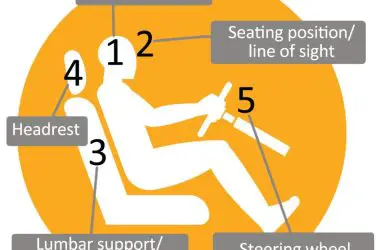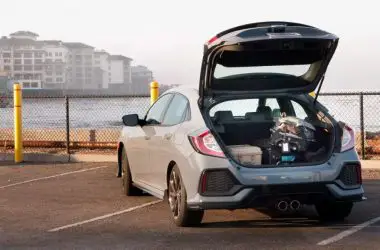Hidden Spaces Mask Illicit Activities
Hidden compartments and spaces in vehicles enable drivers to conceal illegal or dangerous items from plain view. According to wired.co.uk, by the 1990s drug traffickers commonly used these secret areas, prompting law enforcement crackdowns.
Brief History
Hidden compartments in cars first became popular during Prohibition in the 1920s and 1930s. Bootleggers would use secret compartments to conceal illegal alcohol and smuggle it past authorities. These hidden spaces were often built into the body of the car behind the seats, under the floorboards, or inside the dashboard. According to an article on JC Whitney’s website, “Cars with secret compartments became an essential tool in the bootlegger’s arsenal, allowing them to smuggle alcohol discreetly…” (Source).
By the 1990s, hidden compartments became useful for drug traffickers trying to conceal narcotics. However, early compartments had flaws that made them easy for law enforcement to detect. Improvements in design and technology have made modern hidden car compartments much harder to find (Source).
Legal Issues
Laws regarding hidden compartments in vehicles vary by state in the United States. Some states, such as California, have banned concealed compartments in vehicles unless they are solely used for legal storage. According to the California Vehicle Code Section 24610, it is illegal to own or use a false compartment with the intent to store, conceal, smuggle, or transport illegal drugs or contraband.
Other states like Ohio have banned secret compartments outright, regardless of intended use, due to their frequent abuse for criminal activity. In Ohio, it is a fourth-degree felony under Section 2923.241 to design, build, use, or possess a hidden compartment in a vehicle. First-time offenders can face up to 18 months in prison.
At the federal level, there is no specific law prohibiting secret compartments in vehicles. However, the US Justice Department takes the position that designing or building concealed compartments with the intent to transport contraband is a crime. While difficult to prove intent, federal prosecutors have charged and convicted offenders under the general federal conspiracy statute (https://slate.com/news-and-politics/2013/12/secret-compartments-does-your-car-have-a-hidden-compartment-stay-away-from-ohio.html).
Safety Concerns
Hidden compartments that are improperly installed can pose serious safety risks, especially if flammable or hazardous materials are stored inside. According to the FBI’s legal digest on hidden compartments, explosions have occurred when poorly constructed spaces leaked gasoline fumes that were ignited by hot exhaust systems (1). The Institute for Criminal Justice Training has warned law enforcement that hidden containers may contain explosive devices that could be detonated during a traffic stop (2).
Auto repair professionals caution about the fire hazards caused by shoddy electrical wiring to power secret compartments. The heat and sparks from exposed wires can ignite gas vapors or other contents over time, creating a dangerous situation for drivers and passengers (3). Industry guidelines recommend using flame resistant materials, separate ventilation, and proper fuse panels when installing concealed spaces in vehicles.
Sources:
(1) https://leb.fbi.gov/articles/legal-digest/legal-digest-investigating-and-prosecuting-hidden-compartment-cases
(2) https://rts.i-car.com/collision-repair-news/crn-1160.html
(3) https://www.wired.co.uk/article/see-no-evil
Popular Locations
Hatchbacks provide ample opportunity for hidden compartments due to their spacious cargo areas. Some of the most common locations for hidden compartments in hatchbacks include:
Under the cargo floor
Lifting up the removable cargo floor reveals a large empty space perfect for fitting a hidden compartment. This takes advantage of unused space and allows for very large compartments. However, it reduces usable cargo room.
Inside the spare tire well
A compartment can be built into the rim of the spare tire well. This is an obscured location that maintains cargo capacity. But the compartment is exposed if the spare tire is removed.
Behind rear seats
Building compartments into the back of the rear fold-down seats utilizes more wasted space. But it may be difficult to access the compartment.
Inside seat cushions
Hollowing out seat cushions can allow small valuables to be stashed. However, this can reduce comfort and the compartment is easily found if the seats are inspected.
With some clever designs and carpentry skills, nearly any unused space in a hatchback can be turned into a hidden compartment. The key is balancing accessibility, security, and maintaining cargo utility when selecting locations.
DIY vs Professional Installation
Installing a hidden storage compartment in your car is a project that can be done as a DIY job or hired out to a professional. There are pros and cons to both approaches.
Doing it yourself allows you to save money on labor costs. With some basic tools and materials, you can install a commercially available hidden compartment kit designed for DIY installation. This can be an enjoyable project for hands-on car enthusiasts. However, proper installation does require automotive knowledge and skills. If not done correctly, you risk the compartment not fitting flush, not operating smoothly, or even damaging your vehicle.
Hiring a professional automotive upholstery shop or technician to install a custom compartment ensures it is done properly. They have the expertise to fabricate and integrate the compartment seamlessly into your vehicle without issues. Professionals also offer fully customized compartments designed for your specific make and model. While more expensive than a DIY kit, you get quality craftsmanship and avoid any installation headaches. Some high-end auto customization shops even offer motorized compartments controlled with hidden switches.
Overall, DIY kits appeal if you want to save money but have the needed skills. For those seeking a custom solution integrated to OEM standards, professional installation is recommended despite the higher cost.
Cost
The cost for custom hidden compartments in cars can vary widely depending on the size, design, features, and who is installing it. According to Amazon, basic DIY hidden compartment kits can run from $20 to $130. However, for more complex, custom installations by professionals, the price jumps significantly.
Professional installation of high-quality hidden stash spots, secret doors, and custom compartments by companies like Alfred Anaya can cost $4,000 to $5,000 per compartment. The price is higher for motorized compartments and those with advanced security features like biometric locks. Luxury vehicles and custom sports cars will be at the top end of the price range for customized compartments blending seamlessly into the interior.
So while DIY kits are affordable, vehicle owners who want completely concealed, sophisticated compartments with space for larger items should expect to make a significant investment. The price reflects the custom design, rare materials, extensive labor and installation time required by experts.
Top Brands
When it comes to hidden storage compartments in hatchback vehicles, there are a few leading brands that stand out above the rest.
One of the most popular is Tuffy Security Products. Founded in 1980, Tuffy has become an industry leader in designing and manufacturing high-quality lock boxes and other protective storage solutions for cars and trucks. Their concealed storage compartments are precision engineered to seamlessly integrate into various areas of a vehicle without being noticeable. Tuffy products provide unrivaled security and have a reputation for being extremely durable and reliable.
Another top brand choice is STRATAGAGES. Created by auto enthusiasts, STRATAGAGES takes customization to the next level with their stealth stash spots for hiding valuables in your vehicle. From clever lift-out seat pan compartments to hidden rear speaker cabinets with storage behind them, STRATAGAGES has innovative compartment designs to securely conceal your important items within your hatchback.
TruckVault is also well-known in the vehicle storage and organization world. They manufacture sturdy, lockable drawers and boxes that can be discretely built into SUVs, pickups, and cars, including hatchback models. Their storage solutions help provide peace of mind knowing your gear and belongings are safely tucked out of sight.
When selecting a top brand for installing concealed compartments in your hatchback, be sure to look for quality, security, durability, and a custom precision fit for your make and model. The leading brands in the industry can help take your secret storage to the next level.
Security Features
Security is a major concern when installing hidden storage compartments in your hatchback. You’ll want to make sure your valuables are protected from theft.
Some of the security features to consider include:
-
High-quality locking mechanisms – Look for sturdy, pick-resistant locks to keep your compartments secured. Keyless entry options like keypads or biometrics can also be useful.
-
Lid access controls – Spring-loaded lids that only open when a secret latch is activated help prevent accidental discovery of your compartments.
-
Discrete, flush-mounted openings – Compartments that blend seamlessly into your car’s interior are harder to detect. Avoid compartments with obvious seams or openings.
-
Back-up battery for powered locks – In case your car battery dies, make sure any electric locks will still function with a back-up battery.
-
Anti-tamper alarms – Motion sensors or alarms can alert you if someone tries to access your compartment without authorization.
-
RFID blocking – Line your compartments with RFID blocking material to prevent remote scanning and theft of info from RFID-enabled credit cards or passports inside.
The right combination of security features will help keep your valuables protected and you peace of mind intact.
Conclusion
In summary, hidden storage compartments in hatchbacks can provide useful space for keeping valuables out of sight. However, they also have some legal issues and safety concerns to consider. If installed properly by professionals, they can serve as a convenient feature. But otherwise, the risks may outweigh the benefits for some car owners. When deciding whether to install hidden compartments, carefully weigh the pros and cons. Consider your personal needs, but keep the legal and ethical implications in mind as well. With the right approach, hidden hatchback storage can be a unique addition to your vehicle.
In closing, hidden storage in hatchbacks is an intriguing idea for car owners seeking more security. But the practice also warrants caution. This article aimed to outline the key factors to weigh when considering hidden compartments. There are many angles to assess – from brands and pricing to safety and legal matters. Always think through these implications fully before moving forward. With prudence and care, concealed storage spaces can become useful assets. Hopefully this piece provides food for thought to aid your decision making.




